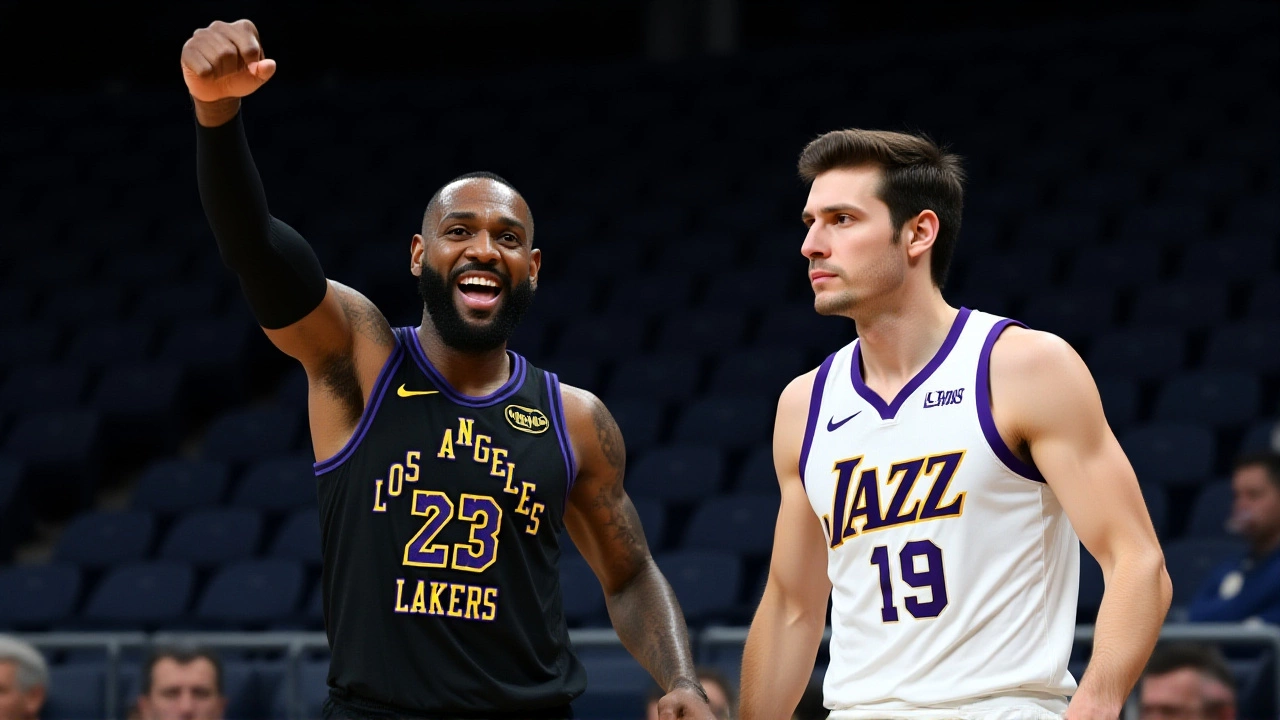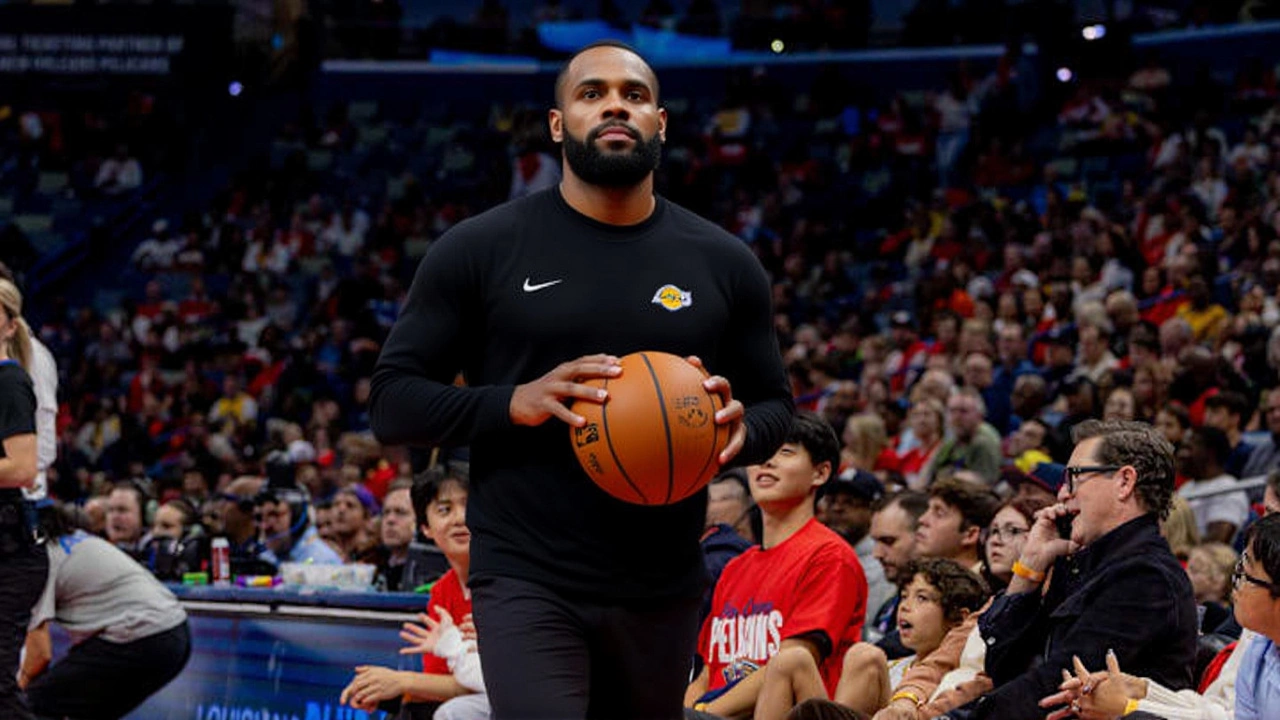On Tuesday, November 18, 2025, at 10:30 PM UTC, LeBron James stepped onto the court at Crypto.com Arena in Los Angeles—not just to play, but to rewrite history. At 40 years old, the Los Angeles Lakers forward became the first player in NBA history to appear in 23 consecutive seasons, surpassing Vince Carter’s 22-year streak. His return to the starting lineup against the Utah Jazz wasn’t just symbolic—it was seismic. The Lakers won 116-109, but the real story wasn’t on the scoreboard. It was in the quiet determination of a man who’s been carrying the league on his shoulders since 2003.
A Record That Defies Time
LeBron James’ debut came on October 29, 2003, for the Cleveland Cavaliers. Since then, he’s played through 19 playoff runs, four championships, three different teams, and a global pandemic that halted the season in 2020. He’s played alongside Kobe Bryant, Dwyane Wade, Anthony Davis—and now, a generation of players who were toddlers when he entered the league. This season, he didn’t just show up. He started. And he did it with 22 points, 8 rebounds, and 6 assists, shooting 9-of-17 from the field. No one else in NBA history has even reached 22 seasons. Not Jordan. Not Magic. Not Kareem. And now, no one ever will.
It’s not just longevity. It’s consistency. James has averaged at least 25 points per game in 19 of his 23 seasons. He’s the only player to record over 40,000 career points and 10,000 rebounds. He’s played in more All-Star games than any other player. And still, he wakes up every morning at 4 a.m. for training. "He doesn’t play like he’s 40," said one Lakers assistant coach off the record. "He plays like he’s still trying to prove something. And he always has."
The Jazz’s Struggles and the Lakers’ Puzzle
The Utah Jazz, at 5-8, entered the game with momentum after a 150-147 overtime win over the Chicago Bulls two nights prior. Their star, Lauri Markkanen, was averaging 30.6 points per game—among the league’s top scorers. Point guard Keyonte George, 21, was dishing out 7 assists a night, showing flashes of elite playmaking. But injuries were crippling them. Center Walker Kessler, their defensive anchor, was out for the season with a torn shoulder ligament. Three other rotation players—Kyle Anderson, Taylor Hendricks, and Kyle Filipowski—were listed as questionable. The Jazz looked thin. And they were outmuscled in the paint.
Meanwhile, the Lakers’ roster had become a puzzle. Multiple reports, including from NBA Analysis, listed Luka Dončić as a Lakers starter—a glaring error. Dončić plays for the Dallas Mavericks. He wasn’t even in the building. The confusion stemmed from a mislabeled depth chart, likely a copy-paste glitch from a draft board. The real starters: James at small forward, Austin Reaves at shooting guard, Gabe Vincent at point guard, and Anthony Davis at center. Reaves, averaging 28.3 points and 8.2 assists, thrived with James on the floor. "When he’s out there, defenses have to pick their poison," Reaves said postgame. "You can’t sag off me when he’s driving. It opens everything up."

The Ripple Effect: How One Player Changes a Team
NBA Analysis claimed James’ return "already proves" Reaves would see the most significant impact—and they weren’t wrong. Without James in the lineup earlier this season, Reaves was taking 18.7 shots per game. In his first two games back, he dropped to 14.2. That’s not a reduction—it’s a redistribution. James draws double-teams. He creates open threes. He makes Reaves’ job easier. And defensively, James’ ability to switch onto guards and bigs lets Reaves focus on perimeter lock-down duty. It’s a luxury few teams have: a 40-year-old who still guards multiple positions at an All-NBA level.
Even the arena’s naming rights—Crypto.com Arena—felt ironic. The $700 million deal with the cryptocurrency exchange was meant to symbolize the future. But on this night, the future was standing at the free-throw line, wearing No. 23, calmly sinking a pair with 38 seconds left. The crowd roared. Not for the tech company. Not for the flashy lights. For the man who’s been here since the iPod era.
What’s Next? The Legacy Continues
The Lakers’ next game is Friday, November 21, against the Portland Trail Blazers. James has not indicated retirement. His contract runs through 2026-27. He’s said repeatedly he wants to play until his body says no. And right now, it’s still saying yes. The question isn’t whether he’ll play 24 seasons. It’s whether the league will let him. The NBA has never seen a player like him. And it may never again.

Behind the Numbers: The Stats That Define a Legend
- LeBron James: 23 consecutive NBA seasons (1999–2026)
- First player to play in 23 seasons—surpassing Vince Carter (22)
- 2003–2026: Only player to play in the NBA across four different decades
- 2025–26 season debut: First game of the year after sitting out preseason
- 38,652 career points (NBA all-time leader)
- 10,570 career rebounds (top 5 all-time)
- 10,420 career assists (top 5 all-time)
He’s not just a player. He’s a phenomenon. And he’s still playing.
Frequently Asked Questions
How does LeBron James’ 23rd season compare to other NBA legends’ careers?
No player in NBA history has played 23 seasons. Vince Carter held the record at 22, retiring in 2020. Kareem Abdul-Jabbar played 20 seasons, and Robert Parish and Kevin Willis both played 21. James is the only player to have played in the league across four decades—2000s, 2010s, 2020s, and now 2030s. His longevity is unprecedented, especially considering he’s averaged over 25 points per game for nearly two decades.
Why was Luka Dončić listed as a Lakers starter in some reports?
Multiple sources, including NBA Analysis, mistakenly listed Luka Dončić as a Lakers starter due to a data-entry error. Dončić plays for the Dallas Mavericks and was not on the Lakers’ roster. The confusion likely stemmed from a draft or simulation tool being misused in a depth chart template. The actual Lakers starters were LeBron James, Austin Reaves, Gabe Vincent, Anthony Davis, and D’Angelo Russell.
How has LeBron’s playing style changed over 23 seasons?
Early in his career, James was a 250-pound explosive athlete who drove to the basket with ferocity. Now, at 40, he’s a cerebral playmaker who uses timing, footwork, and passing lanes to dominate. His three-point shooting has improved dramatically—he’s averaging 3.8 threes per game this season. He’s also become a master of rest, playing fewer minutes per game (29.1) than in his prime, yet still contributing at an elite level. His IQ, not his athleticism, is his greatest weapon now.
What impact does James’ presence have on younger Lakers like Austin Reaves?
Reaves’ shot attempts dropped from 18.7 to 14.2 per game in James’ first two games back, but his effective field goal percentage jumped from 49% to 58%. James draws double teams, creating open looks. Defensively, Reaves no longer has to guard the opponent’s best perimeter player—James handles that. It’s a luxury few young guards get. Reaves has called it "the ultimate tutorship," saying he’s learning how to pace a game from someone who’s done it longer than anyone alive.
Could LeBron James play beyond 2027?
His contract expires after the 2026–27 season, but he’s never been more physically prepared. He spends over $1 million annually on recovery—cryotherapy, hyperbaric chambers, personalized nutrition. His body is a scientific marvel. If he wants to play in 2027–28, the Lakers will likely restructure his deal. He’s not just a player; he’s a brand, a marketing engine, and a cultural icon. The league needs him. And he still has something to prove.
What’s the significance of playing at Crypto.com Arena?
The arena’s name, tied to a cryptocurrency exchange, symbolizes the NBA’s modern financial era. But on this night, the most valuable asset wasn’t a digital token—it was a 40-year-old man in a Lakers jersey, still making history. The irony wasn’t lost on fans. While the arena’s naming rights cost $700 million, James’ legacy is priceless. He’s played here since 2018. He’s won two titles here. And now, he’s etched his name into the record books right where it belongs—in the heart of the game, not on a billboard.
